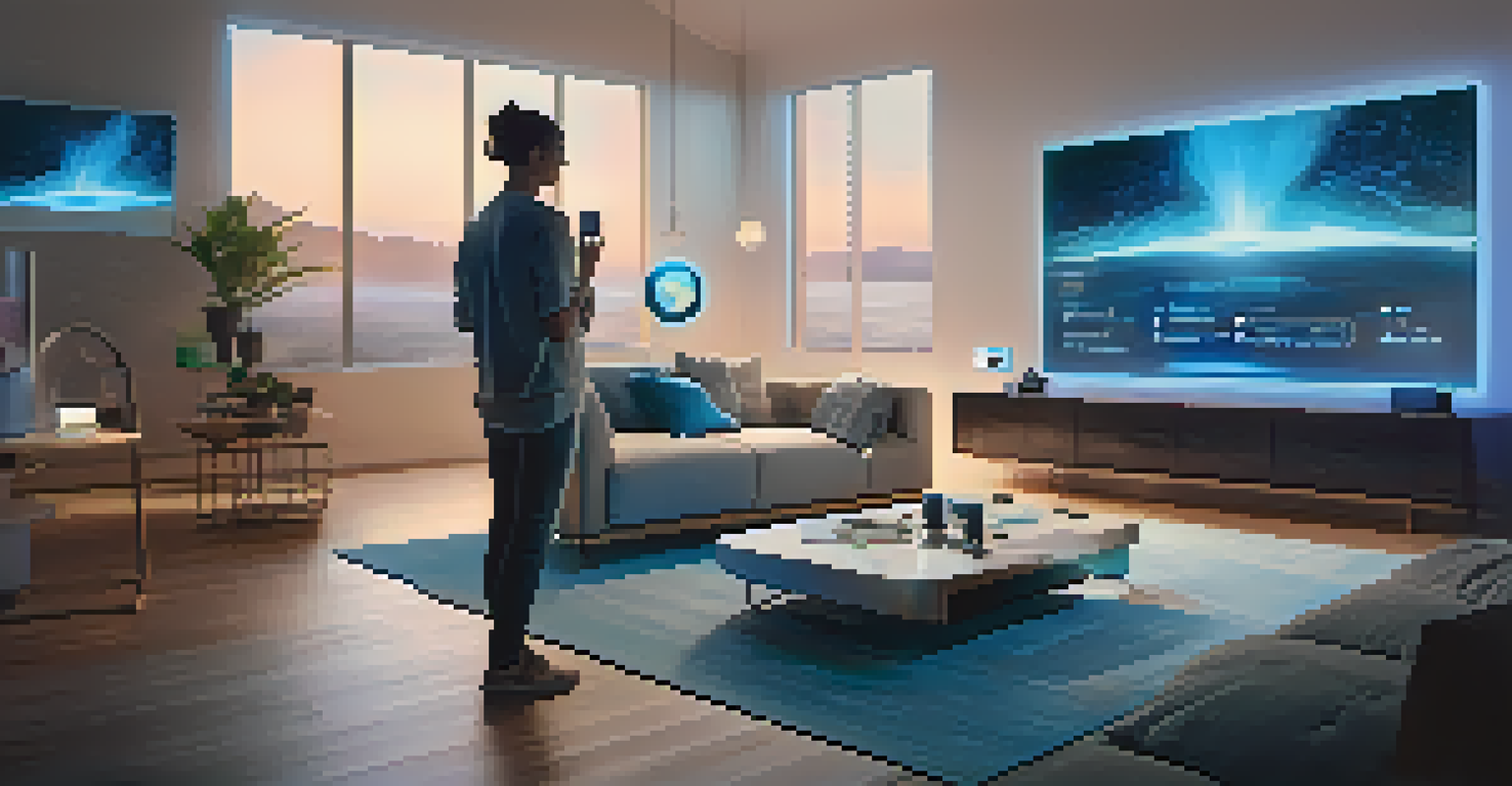The Evolution of Voice Interfaces in Modern Technology

The Early Days: Birth of Voice Recognition Technology
Voice recognition technology has its roots in the 1950s, when Bell Labs introduced the first system that could understand digits. This early attempt was a monumental step, albeit limited, as it could only recognize a handful of spoken words. Despite its constraints, it laid the groundwork for future advancements, sparking curiosity among researchers and tech enthusiasts alike.
The greatest technology in the world hasn't replaced the greatest technology in the world, and that is the human mind.
As the decades progressed, the technology evolved, with systems capable of recognizing different languages and accents. However, it wasn't until the late 1990s that significant breakthroughs occurred, allowing voice recognition to become more accessible to the public. This period marked the transition from experimental technology to practical applications in everyday life.
The combination of increased computing power and advancements in machine learning set the stage for more sophisticated voice interfaces. By the 2000s, we started seeing voice recognition integrated into various devices, making it easier for users to interact with technology in a more natural way.
Rise of Natural Language Processing (NLP)
Natural Language Processing, or NLP, is the technology that enables machines to understand and respond to human language in a way that feels natural. This branch of artificial intelligence has become crucial for the evolution of voice interfaces, allowing them to interpret context and nuance. Imagine having a conversation with your device rather than just issuing commands; that's the power of NLP.

With NLP, voice interfaces began to understand not just what we say, but also the intent behind our words. This advancement led to more fluid interactions, where users could ask complex questions or make requests without needing to simplify their language. For example, instead of saying 'set a timer for 10 minutes', you could say, 'Can you remind me to check the oven in about ten minutes?'
Voice Tech's Evolution Over Decades
Voice recognition technology has advanced from simple systems in the 1950s to sophisticated smart assistants that enhance user interaction today.
As NLP continues to improve, the potential for voice interfaces expands. Today, they can handle multiple languages and dialects, making technology more accessible to a global audience, thus enhancing user experience across the board.
Smart Assistants: A Game Changer in Voice Technology
The introduction of smart assistants like Siri, Alexa, and Google Assistant marked a significant turning point for voice interfaces. These platforms brought voice recognition into the mainstream, allowing users to perform various tasks simply by speaking. Whether it's playing music, checking the weather, or controlling smart home devices, these assistants made technology more intuitive and user-friendly.
Voice is the new touch. It’s a way to communicate that’s more natural and seamless.
Smart assistants leverage the power of both voice recognition and NLP, creating a seamless experience for users. They learn from interactions, adapting to individual preferences and speaking styles over time. This personalization not only makes interactions smoother but also enhances user satisfaction, as the technology feels more tailored to their needs.
Moreover, the proliferation of smartphones and connected devices has fueled the growth of smart assistants. With millions of devices now equipped with voice technology, users can engage with their digital environment in ways previously thought impossible, making everyday tasks more efficient and enjoyable.
Voice User Interface (VUI) Design: Crafting Seamless Experiences
As voice technology advanced, so did the need for effective Voice User Interface (VUI) design. VUI focuses on creating intuitive interactions between users and voice interfaces, ensuring that conversations feel natural and fluid. Think of it as designing a dialogue rather than a series of commands; this shift in perspective is crucial for user engagement.
Good VUI design considers various factors, such as language, tone, and context. Designers aim to create an experience where users feel understood and valued, which can significantly impact how technology is perceived. For instance, a friendly and approachable voice can make a user more likely to engage with an assistant, leading to increased usage and satisfaction.
NLP Transforms User Interactions
Natural Language Processing enables voice interfaces to understand context and intent, making conversations with devices feel more natural.
Testing and refining VUI through user feedback is essential for creating effective voice interfaces. By observing how real users interact, designers can identify pain points and areas for improvement, ultimately leading to more successful and enjoyable voice experiences.
Voice Interfaces in Smart Homes: Convenience Redefined
The integration of voice interfaces into smart home technology has revolutionized how we interact with our living spaces. With just a simple voice command, users can control lighting, adjust thermostats, or lock doors, creating a level of convenience that was previously unimaginable. This hands-free approach not only saves time but also enhances safety and accessibility.
Imagine walking into your home after a long day and simply saying, 'Turn on the lights' or 'Set the mood for movie night.' This ease of use is particularly beneficial for individuals with mobility challenges, as they can manage their environment without physical effort. Voice interfaces have truly made smart homes more inclusive and user-friendly.
As more devices become compatible with voice technology, the possibilities for smart home automation continue to expand. From security systems to kitchen appliances, the integration of voice interfaces is reshaping our daily routines and enhancing our overall quality of life.
Challenges and Limitations of Voice Technology
Despite the impressive advancements in voice technology, challenges remain. One of the biggest hurdles is accurately understanding diverse accents and dialects. While systems have improved, there are still instances where a voice interface may misinterpret a command due to linguistic variations, leading to user frustration.
Privacy concerns also play a significant role in the adoption of voice interfaces. Many users worry about how their data is being used and whether their conversations are being recorded. This hesitation can prevent individuals from fully embracing voice technology, highlighting the need for transparency and robust security measures.
Smart Homes Redefine Convenience
The integration of voice interfaces in smart home technology allows users to control their environment hands-free, significantly enhancing convenience and accessibility.
Moreover, the reliance on internet connectivity can pose limitations for voice interfaces. In areas with poor connectivity, the performance of these systems can be compromised, making them less reliable. Addressing these challenges is essential for the continued success and growth of voice technology in the future.
The Future of Voice Interfaces: Trends to Watch
Looking ahead, the future of voice interfaces is promising, with several trends set to shape their evolution. One key trend is the increasing use of artificial intelligence to enhance the capabilities of voice technology. As AI continues to progress, we can expect voice interfaces to become even more responsive and context-aware, making interactions feel even more human-like.
Another trend is the integration of voice interfaces within virtual and augmented reality environments. Imagine navigating a virtual world or overlaying digital information onto the real world using simple voice commands. This exciting development could redefine how we interact with both digital and physical spaces.

Lastly, as voice technology becomes more ubiquitous, we may see a shift towards more personalized experiences. Future voice interfaces could adapt to individual user preferences and styles, creating a truly customized interaction. This evolution will not only improve usability but also deepen the connection between users and their technology.